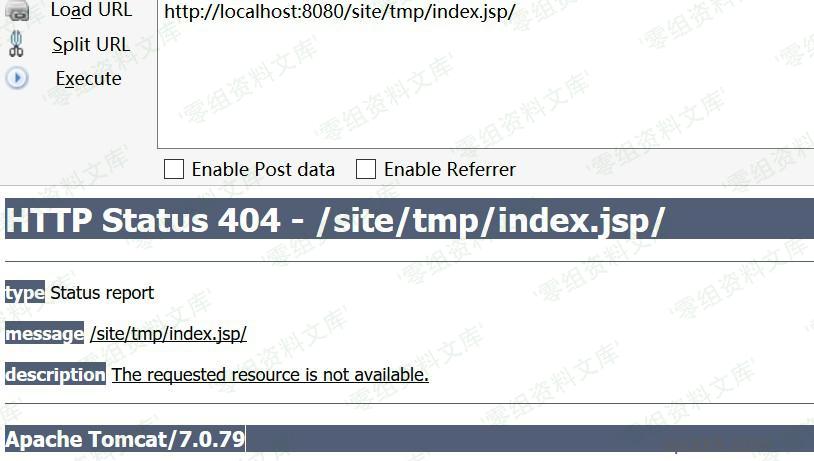(CVE-2017-12616)Tomcat 信息泄露
一、漏洞简介
CVE-2017-12616(信息泄露):允许未经身份验证的远程攻击者查看敏感信息。如果tomcat开启VirtualDirContext有可能绕过安全限制访问服务器上的JSP文件源码。漏洞触发的先决条件是需要在conf/server.xml配置VirtualDirContex参数,默认情况下tomcat7并不会对该参数进行配置。
那么为什么要配置一个这样的虚拟目录呢?
通过VirtualDirContext,允许在单独的一个webapp应用下对外暴露出多个文件系统的目录。在实际开发中,为了避免拷贝静态资源文件如(images等)至webapp目录下,tomcat推荐的做法是在server.xml配置文件中建立虚拟子目录。
在开启了这个配置之后,可以通过windows目录下的文件的解析问题,从而暴露在在目录中的源码。
二、漏洞影响
Apache Tomcat 7.0.0 - 7.0.80
三、复现过程
漏洞调试
在本地搭建一个系统环境,目录结果如下:
在D:\testtomcat2的目录下面的文件结构如下:
D:.
├─img
│ 1.jpg
│
├─src
│ HelloWorld.java
│
├─target
└─web
│ index.jsp
│
└─WEB-INF
web.xml在tomcat中的conf/server.xml下的``标签下面增加如下的配置:
<Context path='/site' docBase="D:\testtomcat2\web" reloadable="true">
<Resources className="org.apache.naming.resources.VirtualDirContext" extraResourcePaths="/WEB-INF/classes=F:/testtomcat2/target/classes,/images=D:/testtomcat2https://wiki.0-sec.org/img,/tmp=D:/testtomcat2/web" />
<Loader className="org.apache.catalina.loader.VirtualWebappLoader" virtualClasspath="/WEB-INF/classes=F:/testtomcat2/target/classes" />
<JarScanner scanAllDirectories="true" />
</Context>从配置可以发现,我创建了2个虚拟目录。分别为images和tmp,分别映射到本地的D:/testtomcat2https://wiki.0-sec.org/img和D:/testtomcat2/web。大家在进行测试的时候,可以根据自己的目录自行参照修改。
部署完毕之后,在浏览器中访问localhost:8080/site/images/1.jpg

顺利地出现了1.jpg,说明部署正确。
这个漏洞的触发,同样会使用到tomcat中因为文件后缀的解析的问题。和12615是一样的,只有后缀是jsp和jspx由JSPservlet处理,其他都是由DefaultServlet处理。在12615中配合PUT方法,可以通过上传test.jsp%20、test.jsp/、test.jsp::$DATA的方式上传任意的问价,包括webshell。但是在本例中,只能通过test.jsp%20和test.jsp::$DATA获得源代码,无法通过test.jsp/获取源代码。以下就是演示的结果:

而访问http://localhost:8080/site/tmp/index.jsp/会显示404,

整个漏洞的分析过程和12615是一样的,下面就为什么无法使用test.jsp/无法获取源代码进行说明。
当访问http://localhost:8080/site/tmp/index.jsp/时,是由Tomcat中的DefaultServelt::doGet来处理。
@Override
protected void doGet(HttpServletRequest request,HttpServletResponse response) throws IOException, ServletException {
// Serve the requested resource, including the data content
serveResource(request, response, true);
}追踪进入到serveResource,其中的关键代码如下:
protected void serveResource(HttpServletRequest request,HttpServletResponse response,boolean content) throws IOException, ServletException {
boolean serveContent = content;
// Identify the requested resource path
String path = getRelativePath(request, true);
CacheEntry cacheEntry = resources.lookupCache(path);
// If the resource is not a collection, and the resource path
// ends with "/" or "", return NOT FOUND
if (cacheEntry.context == null) {
if (path.endsWith("/") || (path.endsWith(""))) {
// Check if we're included so we can return the appropriate
// missing resource name in the error
String requestUri = (String) request.getAttribute(
RequestDispatcher.INCLUDE_REQUEST_URI);
if (requestUri == null) {
requestUri = request.getRequestURI();
}
response.sendError(HttpServletResponse.SC_NOT_FOUND,
requestUri);
return;
}
}
}所以当cacheEntry.context == null而且path.endsWith("/") || (path.endsWith("")),则直接向客户端返回404,所以采用test.jsp/方式并不能够成功触发获取服务端漏洞的JSP代码。
所以这也就是为什么通过test.jsp/获取源代码的原因了。
参考链接
https://blog.spoock.com/2017/09/25/tomcat-cve-2017-12615-12616/